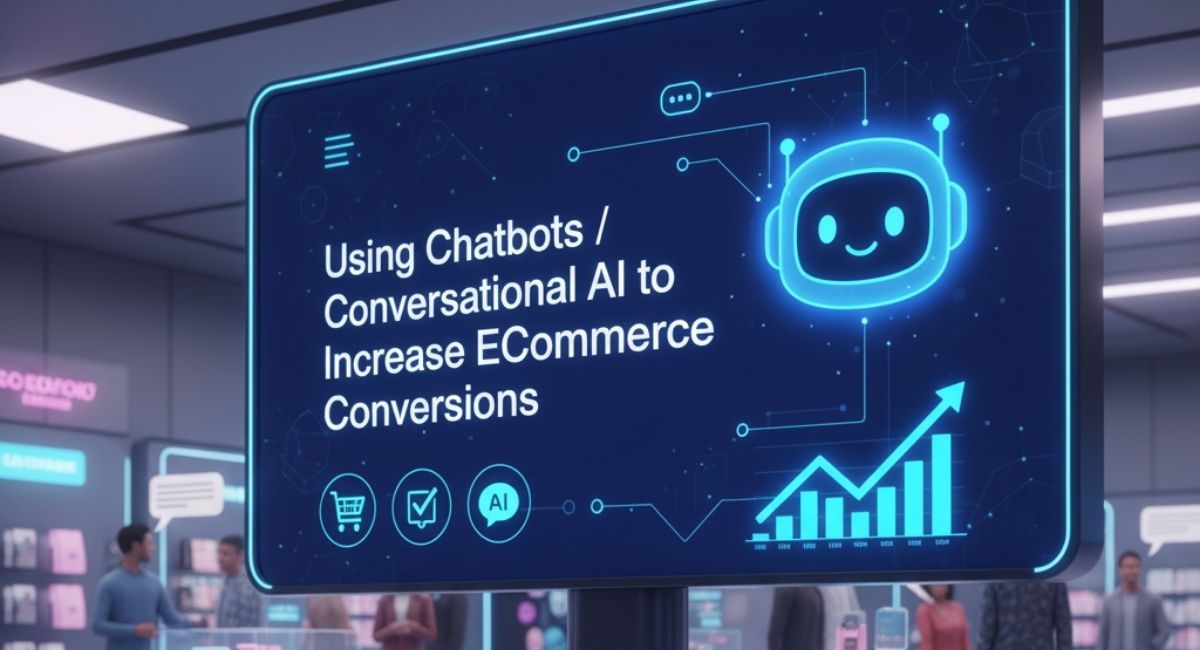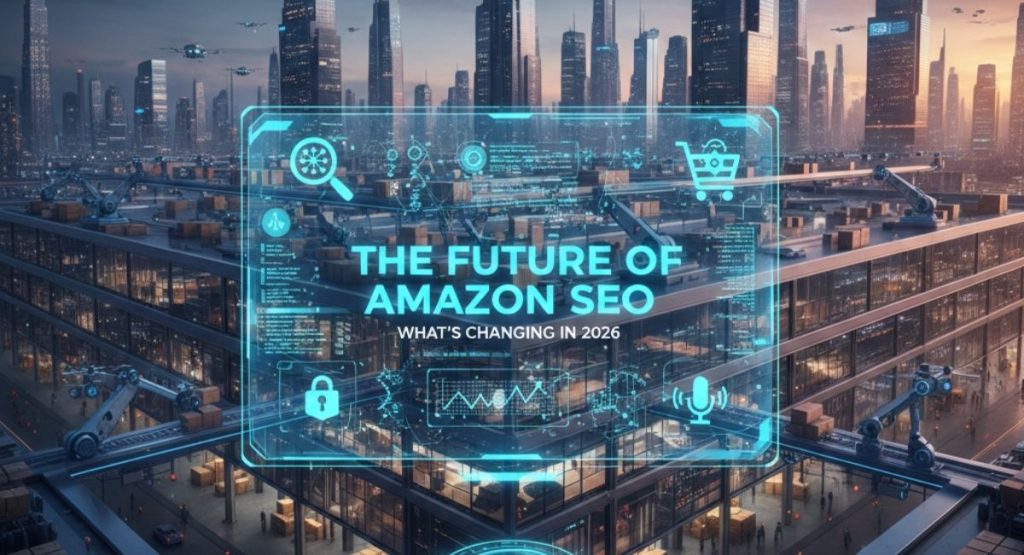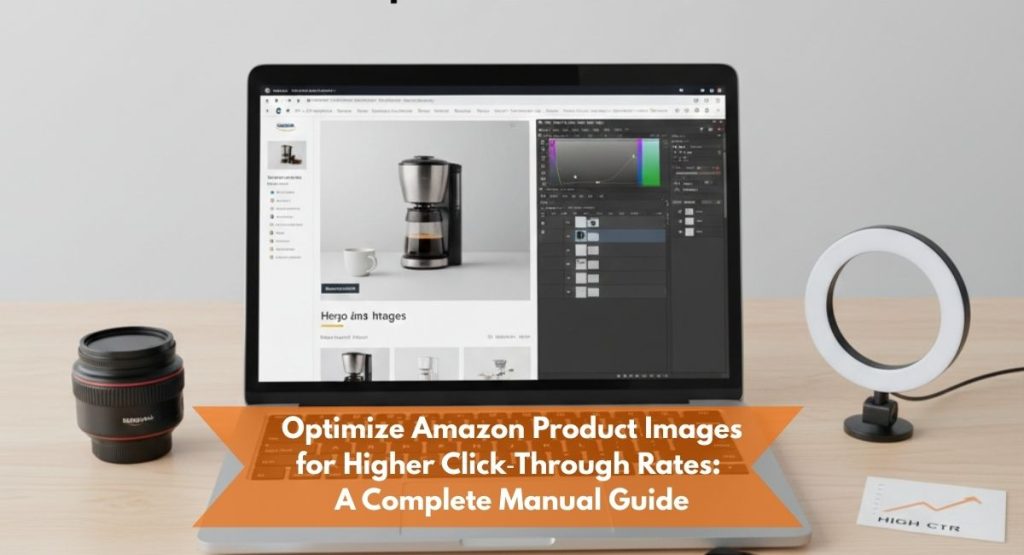Why conversational AI matters for eCommerce growth
Imagine a visitor lands on your product page at 2 a.m. They are unsure about sizing, shipping, or whether to compare two items. Without assistance, many will drop off or abandon their cart. A well-designed conversational AI can intervene in that moment: answer their questions, suggest alternatives, influence the decision, and steer them toward checkout.
Data supports this. Brands using AI chat assistants report up to 14 % average lift in conversion when bots intervene during cart abandonment or browsing behavior. In some case studies, chatbots have helped businesses increase overall conversions by 10–100 %. And shoppers who engage with AI chat convert at 12.3 %, versus 3.1 % who don’t — a roughly four-times difference.
So if your base eCommerce conversion rate is, say, 3 %, you could see that climb to 3.5–4 % or more by letting bots handle the right parts of the funnel. That’s extra revenue with the same traffic.
To make this work reliably, you need a systematic approach: from strategy to design, integration, measurement, and ongoing tuning.
How to use chatbots / conversational AI to increase conversions
Below is a step-by-step guide you can follow as a manual for your implementation. Use it as a checklist or playbook.
1. Set clear goals and conversion metrics
Before building anything, define success. What kinds of conversions do you expect? Some examples:
- Completed purchases
- Recovering abandoned carts
- Leads / contact forms
- Upsells or cross-sells
- Email subscriptions or chat signups
Decide benchmarks you want to reach, such as: “Increase checkout conversion by 10 %,” or “Recover 20 % of abandoned carts via chat.” This way you can measure progress.
Set up tracking so you know which chatbot interactions turned into revenue. For example:
| Metric | Definition | Target |
| Chat engagement rate | % of site visitors who start a chat | e.g. 8 % |
| Chat-to-purchase conversion | % of chat sessions that end in sale | e.g. 12 % |
| Cart recovery rate | % of abandoned carts reclaimed via chat | e.g. 20 % |
| Average order value uplift | Extra revenue per order due to bot suggestions | e.g. +5 % |
With those targets, you’ll know whether your conversational AI is truly helping.
2. Choose the right chatbot type and platform
Not all chatbots are the same. You should pick the style that fits your store, budget, and customer expectations. Here are main categories:
- Rule-based bots: follow decision trees, fixed responses
- AI / NLP bots: understand freeform user text
- Hybrid bots: combine rules + AI fallback
- Live chat with AI assistant: humans assisted by AI
For many growing eCommerce brands, a hybrid model is best: the bot handles standard queries and routing, escalates to a human if needed.
When selecting a platform, ensure it supports:
- Integration with your eCommerce stack (Shopify, WooCommerce, etc.)
- Access to your product catalog and inventory
- Ability to trigger chat based on user behavior (exit intent, cart stall)
- Support for cross-sell, recommendation logic
- Analytics and conversion tracking
If you are on Shopify, for example, search for Shopify chatbot integration benefits solutions that sync product data automatically.
3. Define conversation flows and guardrails
The heart of any chatbot is its flows: how the conversation proceeds.
Key conversation types to build
- Welcome/onboarding: Greet a visitor, offer help, ask what they are seeking
- Product discovery: Ask questions to narrow down what user wants (e.g. style, size, price range)
- Cart assistance: Recognize when a cart becomes idle or user lingers — ask if they need help
- Upsell / cross-sell: After initial product is chosen, suggest complementary items
- Objection handling: Preempt common concerns (shipping cost, return policy, stock availability)
- Order tracking / support: For post-purchase queries
Best practices in designing your conversation
- Use short, friendly prompts rather than long paragraphs
- Always offer a fallback or “speak to agent” option
- Maintain context (if user was asking about size, keep that in memory)
- Avoid “robotic” tone; treat chat as a guided dialogue
- Use buttons / quick replies where possible to reduce friction
Map out your flows visually (e.g. with flowchart tools) before coding. Test them manually to see where dead ends might occur.
4. Integrate with your eCommerce ecosystem
A chatbot must connect to your store’s backend systems so that it can do things like:
- Show real-time stock
- Add item to cart / checkout
- Pull product details and variants
- Sync with your CRM and email system
Without these integrations, your bot is just for show — it won’t be able to directly drive sales.
For example, your custom web development or ecommerce web development teams might help you tie the chatbot to APIs that fetch inventory or push orders. You could also use existing connectors available in many chatbot tools, especially for Shopify or WooCommerce. You may even engage a professional partner such as Maxim Blu via their ecommerce web development services.
5. Launch smart triggers and context prompts
A chatbot that waits passively is less effective. Use behavior-based triggers to prompt when a user might need help.
Some trigger ideas:
- When a user lingers on a product page for more than 30 seconds
- When they scroll to bottom but don’t click “Add to cart”
- When they try to leave the site (exit intent)
- When they return after a cart abandonment
- On specific high-value pages (e.g. shipping info, returns)
In each case, your bot can offer to assist (“Need help choosing size?”), offer a discount, or guide them to a FAQ.
6. Optimize conversation paths with A/B testing
Once live, your work isn’t done. You should constantly refine the chatbot’s scripts, prompts, and timing.
- Test different welcome messages (friendly vs direct)
- Vary the number of questions in product guides
- Try different offers (e.g. free shipping, small discount) within chat
- Experiment with button style vs open text
Monitor which flows convert best, where users drop off, and iterate.
7. Monitor, analyze, and improve
Set up dashboards to track:
- Chat sessions started
- Chat abandonment (where users leave mid-chat)
- Conversions attributable to chat
- Revenue per session
- Time to first response
- Fallback escalations
Review logs to find misunderstandings and edge cases. Regularly retrain your NLP model or improve keyword matching.
Gather customer feedback: did the bot help or frustrate? Use that insight to refine phrasing or add alternative responses.
8. Scale and localize
As your store grows, consider:
- Multilingual chatbots to serve global audiences
- Voice-based chatbots if your commerce is accessible by voice assistants
- Segmented bots for VIP customers or high-value product categories
- Deep integrations with marketing automation (send email followups after chat)
Also, expand your bot’s domain: support, warranty claims, cross-sell after purchase, reorders subscription logic.
Examples & mini case comparisons
Here are two simplified examples to show how much conversational AI can affect conversion.
Example A: Cart abandonment rescue
A shopper adds shoes to cart, then hesitates on the checkout page. After 20 seconds of no action, chatbot triggers: “Hey — I see you’ve got size 9 in cart. Do you want help with delivery options or availability in other colors?”
If user responds “Is there a coupon code?”, the bot offers a small discount or free shipping for completing now. That nudges them back to checkout.
Example B: Product recommendation path
User lands on women’s dresses section. Bot triggers: “Looking for something casual, formal, or party wear?”
User: “Party.”
Bot: “Great. What’s your price range?”
User: “Under $120.”
Bot then displays 3 curated dresses with images and “Add to cart” buttons.
Because the bot guided decision, user is less overwhelmed by a long catalog and is more likely to convert.
In some setups, bots have helped bring conversion of chat participants from 3 % to 17 %.
Common pitfalls to avoid
- Making the chatbot too rigid — no ability to deviate
- Asking too many questions up front
- Not providing fallback to humans
- Not integrating with the store backend
- Overusing popups or trigger prompts (be gentle)
- Ignoring the analytics — set it and forget it is bad
Also, research in AI deployment shows that users may resist a “gatekeeper” chatbot unless they see clear capabilities and quick resolutions. Be transparent about what the bot can or cannot do, and show expected wait times if escalation is necessary.
Comparison: chatbot vs live chat for conversions
| Feature | Chatbot / Conversational AI | Pure human live chat |
| Availability | 24/7, scalable | Limited by staff hours |
| Cost per conversation | Low marginal cost after setup | High (each agent costs time) |
| Speed | Instant responses for standard queries | Depends on agent availability |
| Handling volume | Can manage many sessions simultaneously | Limited capacity |
| Complex cases | Escalate to human when needed | Direct resolution by human |
| Sales upsell potential | Always active and prompting | Dependent on agent skill |
| Error / misunderstanding risk | Higher for AI in edge cases | Lower, humans can ask clarifications |
In practice, a hybrid approach often yields best results: bots manage routine tasks and simple sales, humans handle exceptions and high-value interactions.
Trends and what’s next in conversational AI for eCommerce
Conversational commerce is evolving fast. Some trends to watch:
- Autonomous shopping agents that not only chat but browse, compare, and even checkout for users.
- Voice commerce integrated into smart speakers and voice assistants
- Greater personalization — bots that adapt tone, offers, and paths based on user profile
- Conversational AI across channels — chatbots on social, messaging apps, web
- Better semantic understanding — less reliance on keyword triggers
If you stay proactive and keep refining your strategy, your chatbot system will stay ahead.
Frequently Asked Questions (FAQ)
Q: Do chatbots really reduce cart abandonment?
Yes. Chatbots that sense when a user is about to leave or stall can trigger targeted prompts to assist or offer incentives. Many brands report recovering 14 % or more of abandoned carts.
Q: How much does conversational AI improve conversion rate?
It depends. But many reports show a 10–35 % uplift in conversions for chat-engaged visitors.
Q: What is a good chat-to-purchase conversion benchmark?
If you can get 8–12 % of chat sessions to convert, that’s strong. This is often much higher than sitewide conversion rates.
Q: Should I use a rule-based bot or an AI NLP bot?
If your catalog is small and queries are predictable, rule-based may be fine. But for scale and unpredictability, NLP bots offer better experience, though at higher cost.
Q: How do I avoid annoying customers with chat popups?
Use subtle triggers (e.g. after a few seconds of inactivity), avoid repeat prompts, and respect “no thanks” responses. Always give users control to close or ignore.
Q: Can chatbots suggest upsells and cross-sells effectively?
Yes — especially if you feed them logic or rules (e.g. “if user buys X, suggest Y”), or train with historical data. The bot can present bundles or complementary products in the chat UI.
Q: How much does conversational AI cost for small stores?
There are entry-level bot services with monthly subscriptions, scaling up to custom bots with advanced AI. Cost depends on features like NLP, integrations, support, and volume. A small store can begin with a basic bot and upgrade as conversions grow.
Final thoughts and next steps
Integrating chatbots and conversational AI into your eCommerce site is not just a trendy add-on. When done thoughtfully, it can become a revenue engine, helping visitors find the right products, reducing friction, rescuing abandoned carts, and boosting average order value.
Use this manual as your roadmap: define goals, pick the right platform, design smart conversation flows, integrate deeply with your backend, deploy behavior-based triggers, and measure everything. Then iterate continuously.
If you would rather leave the technical and strategic heavy lifting to experts, you might explore professional custom web development and eCommerce solutions — for example, our eCommerce web development / Shopify or WooCommerce teams at Maxim Blu can assist in building and scaling a bot that truly aligns with your brand and business metrics. Check our ecommerce web development and Shopify web development offerings at Maxim Blu to see how we support such projects.
In short: start modestly, measure wisely, improve systematically — and your chatbot can become one of the highest-ROI tools in your marketing and sales stack.
If you’d like help designing your first chatbot flow or integrating with your system, let me know — I’d be happy to assist.





